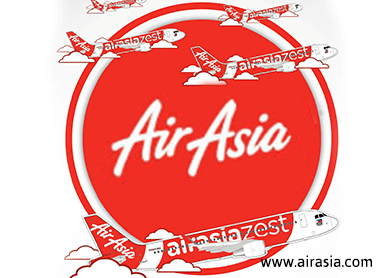
This article first appeared in The Edge Financial Daily, on May 27, 2016.
KUALA LUMPUR: Propelled by higher passenger traffic and lower fuel costs, AirAsia Bhd reported a near-sixfold jump in net profit for the first quarter ended March 31, 2016 (1QFY16), to RM877.79 million, from RM149.33 million a year earlier.
Revenue rose 31% to RM1.7 billion from RM1.3 billion, on the back of a 17% growth in the number of passengers carried to 6.48 million from 5.54 million, the low-cost carrier said yesterday.
The passenger growth was well ahead of the 3% capacity growth, allowing the company to record a high load factor of 85%, it added in a statement.
“The positive momentum we have seen for our Malaysian operations has continued well into the current quarter,” said chief executive officer Aireen Omar. “Our improved revenue per available seat kilometre (Rask) proved that low fares stimulate the market as seen by the sustained increase in the number of passengers.”
AirAsia chairman Datuk Kamarudin Meranun said the budget carrier plans to expand its fleet as it taps demand in a region projected to surpass the United States as the world’s biggest air-travel market in two decades, led by China.
The airline is looking to add five aircraft this year and as many as 10 more in 2017 “depending on demand”, Kamarudin said in an interview with Bloomberg, adding that the carrier is also planning to increase the number of destinations in China from 18 and frequency of its flights in the world’s second-biggest economy.
“We see the strongest growth in China,” he said. AirAsia currently has about 170 aircraft in its fleet.
Aireen, in her statement, said AirAsia’s ancillary revenue as a whole increased 22% in 1QFY16 with the highest contribution coming from baggage (making up 45% of total ancillary revenue), followed by cargo (9%) and insurance (7%).
She said the highest growth among its ancillary products was AirAsia Courier, which surged over 1,000%, sale of in-flight merchandise (up 274%), sale of in-flight duty-free items (up 147%) and connecting fees for its “Fly-Thru” service (up 74%).
“These led to the company recording an ancillary income per passenger of RM50 this quarter (up 5%), thus achieving our target,” she added.
AirAsia’s Malaysian operations’ Rask was up 17% to 16.88 sen, while cost per available seat kilometre (Cask) fell 1% to 11.7 sen. But its aircraft operating expenses doubled to RM111.73 million resulted in its Cask ex-fuel rising 25% to eight sen.
Meanwhile, AirAsia’s best-performing associate, Thai AirAsia (TAA), made an after-tax profit of 1.83 billion baht (RM209.33 million), an increase of 99% year-on-year. Revenue rose 16% to 8.97 billion baht.
Group chief executive officer Tan Sri Tony Fernandes said TAA’s 18% passenger increase in the quarter also led to it recording its highest load factor, at 88%, as there was a strong momentum in total tourist arrivals from China and Asean.
“This led to a 3% increase in Rask at 1.81 baht. Meanwhile, Cask reduced by 6% year-on-year to 1.39 baht due to a 25% drop in fuel expenses,” said Fernandes.
The group’s 49%-owned Indonesia AirAsia meanwhile turned around with a net profit of 21.95 billion rupiah (RM6.58 million) in the quarter, up 104%, despite a 24% drop in revenue, as it removed additional aircraft from its fleet.
Commenting on the group’s outlook, Fernandes said: “In Malaysia, we are seeing robust demand despite the weaker consumer sentiment and domestic economy. In addition, the trend of local consumers trading down when going on their travel still persists while foreign nationals are still eyeing Malaysia as a value-for-money holiday destination due to our weaker currency.”
He added that demand from Chinese travellers has recovered with a 37% jump in the number of Chinese tourists flying into Malaysia during 1QFY16.
As for the cost going forward, Fernandes said the group’s efforts to hedge 75% of its fuel requirements at an average cost of US$55 (RM224.40) per barrel have “paid off”, and it is now relatively insulated from global fuel price volatility in the coming quarters.